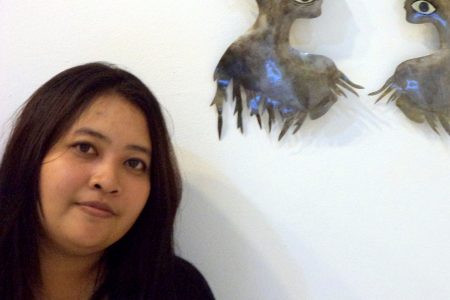Nasirun lives and works in Yogyakarta. He graduated from Indonesian Institute of the Arts. He has lots of experiences in Indonesian art world. Some of his exhibitions are, The (Un)Real, Galeri Nasional, Jakarta (2008), Biennale Jogja X – Jogja Jamming, Taman Budaya Yogyakarta (2009), Crouching Tiger and Hidden Dragon, Artspace Galleries, London (2011), Singapore Biennale, SAM, Singapura (2013), Diverse: 4 Indonesian Position, Gallery Suppan Contemporary, Vienna (2016), and others. His solo shows:Uwuh Seni, Galeri Salihara, Jakarta (2012) and Nasirun at Museum Narta: Carangan, NuArt Sculpture Park, Bandung (2016). Ia was winner of Phillip Morris Indonesia Art Awards 1997.
Nasirun brings forward the narrative on Sokarajan paintings mostly sold in Sokaraja, Cilacap, Banyumas, Purbalingga, and Bandung. He bought some of those paintings and makes a response to them. Sokarajan paintings are commonly displayed as a home decorating item. This kind of painting is easily found in many regions, peddled on the sides of the street or door to door. People call this type of painting by a few different names, such as Terang Bulan (literally means ‘moonlit’) painting, Malang painting, or the most popular one, Girlan (abbreviated from pinggir jalan which literally means ‘the side of the street’) painting.
Just as other Girlan paintings, the similar fortune falls upon Sokarajan paintings: they do not count in the Indonesian history of fine art. Even nowadays, Sokarajan painters are put under more pressure; the stalls in which they sell their goods must be moved from one place to another. Nasirun encourages us to look back at one important part of history in Indonesian fine art scene: the Girlan painting, which is very close to and well known by our society.





